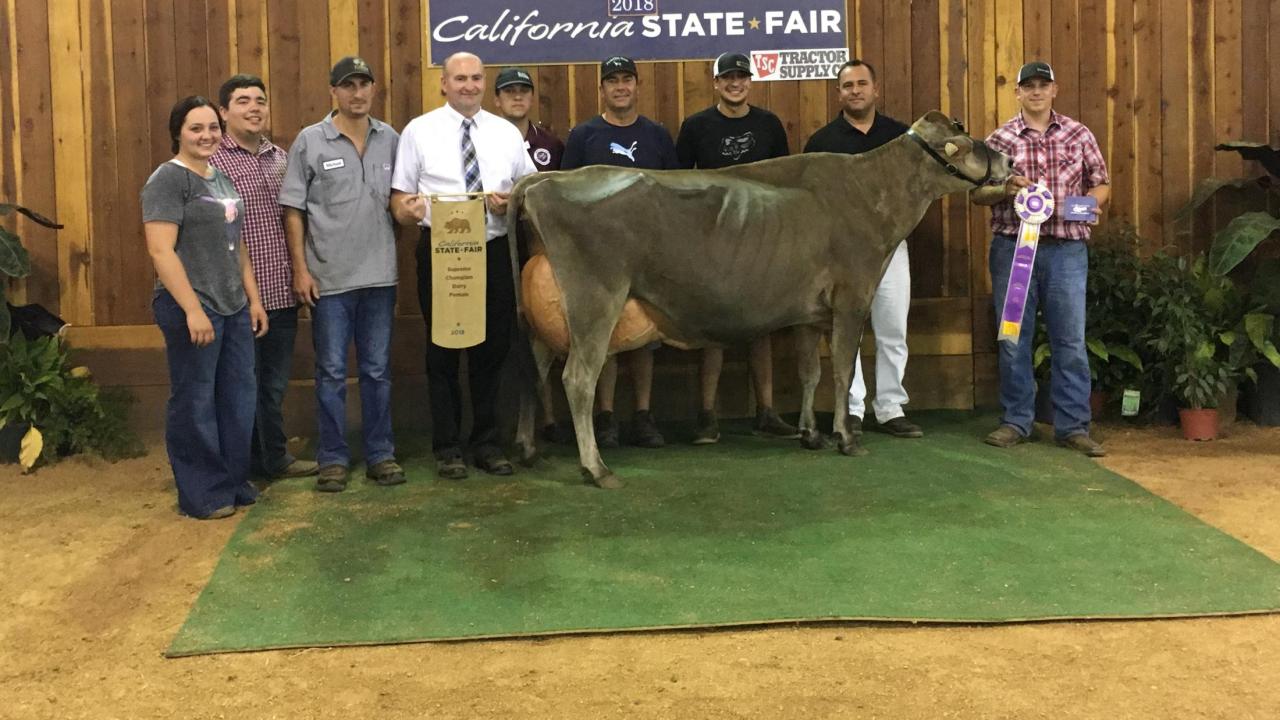
Cow’s Near Fatal Ingestion Prompts Surgery
“Case of the Month” – March 2019
Tag 1839, a 2-year-old Jersey dairy cow, was brought to the UC Davis veterinary hospital for suspected pneumonia. She had been treated appropriately by her primary veterinarian, but without significant improvement, so she was referred to the Livestock Medicine and Surgery Service for further diagnostics and treatment. A blood test showed evidence of severe chronic inflammation, and an ultrasound showed that she had fluid, inflammation, and an abscess in her chest cavity. Radiographs of her chest showed that she had a foreign body—a piece of wire—extending from the first compartment of her stomach toward her heart.
It is not an uncommon to find wire or other metal objects in dairy cows, who ingest them as they indiscriminately scoop feed with their tongues. Wire can enter their food from equipment used for mixing and chopping the feed, or from wire used to bind hay bales. Cows have also been known to eat metal objects such as nails or screws left from construction projects on the farm.
When a cow ingests wire, it can stay within her stomach, or it may move forward as the stomach contracts. This may cause a piercing of the stomach wall, into her abdomen, or into her chest cavity. If the wire continues to travel forward, it will eventually travel to her heart.
Because the stomach is full of bacteria, the wire causes an abscess to form around it and in its wake. To prevent this from happening, most cows are given magnets which are positioned in their stomach and attract any metallic objects that are ingested to prevent them from moving forward. Usually, these magnets stay in the stomach for the life of the cow, but occasionally they can move down the intestinal tract and be expelled in the feces.
If a wire penetrates the chest cavity, it can be fatal for the cow, as they usually succumb to infection or heart failure if the wire pierces the heart or its covering. Surgical removal of the wire is the only option for truly fixing the problem, however chest surgery carries its own significant risks and costs.
Dr. Meera Heller, chief of the Livestock Medicine and Surgery Service, informed Tag 1839’s owner of these risks. Since Tag 1839 was a successful show cow, and genetically valuable, it was decided to pursue surgery. When the grave prognosis and the risks of surgery were discussed, the owner maintained a remarkably optimistic attitude, which greatly helped the clinicians on the case be optimistic as well.
“I so appreciated his optimism and his confidence in our team,” said Dr. Heller. “It was one of the most uplifting conversations I’ve ever had with a client. Without hesitation, he encouraged us to move forward with the surgery.”
Tag 1839 underwent a surgery called a fifth rib resection, during which half of her fifth rib is removed to allow access to the chest cavity. Dr. Betsy Vaughan, chief of the Large Animal Ultrasound Service, helped Dr. Heller and third-year resident Dr. Paolo Tempini to locate the wire in the chest, with minimal tissue disruption and damage. Tag 1839’s surgery was performed with her standing, which allowed better access and a natural position of the tissues. Keeping her in a standing position also stopped the wire from migrating any further. Tag 1839 was heavily sedated with her body supported during surgery. Her cooperative nature in the surgery room contributed to a successful outcome, as the team removed the wire without incident.
Dr. Heller and other UC Davis livestock clinicians routinely serve as on-site veterinarians for the show animals at the California State Fair. One of those animals was Tag 1839, who recovered from her surgery and took home top prize as the Supreme Grand Champion dairy cow.
# # #
